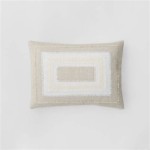Easy Classroom Decoration Ideas For Grade 8 Students
Creating an engaging and stimulating learning environment is crucial for optimizing student learning and fostering a positive classroom atmosphere. For grade 8 students, classroom decoration can transform a space from a mere room into an inspiring hub for knowledge acquisition and personal growth. These decorations do not need to be expensive or overly elaborate; rather, they should be simple, student-friendly, and contribute to the learning process. This article will explore several easy and effective classroom decoration ideas suitable for grade 8 environments, focusing on affordability, ease of implementation, and educational relevance.
Utilizing Student Work as Decoration
One of the most effective and economical ways to decorate a grade 8 classroom is by showcasing student work. This method serves multiple purposes simultaneously. It provides students with a sense of pride and accomplishment, validates their efforts, and contributes directly to the learning environment. Displaying student projects, artwork, and written assignments creates a dynamic and personalized space that reflects the students' learning journey.
When displaying student work, it is important to ensure inclusivity and fairness. Establish a system where all students have the opportunity to have their work showcased throughout the year. This could involve rotating displays weekly or monthly, or designating different areas of the classroom for different types of work. Consider creating a "Student Spotlight" section where exemplary pieces are featured, while also ensuring that all students' efforts are acknowledged and celebrated.
The presentation of student work is also crucial. Use clear plastic sleeves or laminating sheets to protect the work from damage and create a professional appearance. Mounting student work on colored construction paper can also add visual appeal and create a cohesive display. Ensure that displays are organized and visually appealing, avoiding clutter and ensuring that each piece of work is easily visible and accessible for viewing.
Incorporate interactive elements into the student work displays. For example, students could write reflections or comments on their own work or on the work of their peers. This encourages critical thinking, peer learning, and a deeper engagement with the material. Furthermore, consider using digital displays to showcase student work, such as slideshows of digital art or video projects. This can be particularly effective for showcasing work that is not easily displayed in a traditional format.
Subject-specific displays can enhance learning. For example, in a language arts classroom, display student-written poems, essays, or short stories. In a science classroom, showcase student science fair projects, models of cells or ecosystems, or diagrams of the human body. In a social studies classroom, display student-created timelines, maps, or presentations on historical events. These subject-specific displays reinforce learning objectives and provide students with visual aids to support their understanding.
Creating Educational and Inspiring Wall Displays
Wall displays can be powerful tools for enhancing the learning environment and inspiring students. Effective wall displays are visually appealing, informative, and relevant to the curriculum. They should be designed to be engaging and thought-provoking, encouraging students to interact with the material and deepen their understanding.
One effective type of wall display is a "Word Wall." This display features key vocabulary words related to the current unit of study. The words should be written in large, clear font and arranged in a visually appealing manner. Encourage students to use the word wall as a reference tool when writing or speaking. Regularly update the word wall with new vocabulary words as the curriculum progresses, phasing out older terms as needed.
Another valuable wall display is a "Quote Wall." This display features inspirational quotes from historical figures, authors, scientists, or other influential individuals. Choose quotes that are relevant to the curriculum or that promote positive values such as perseverance, teamwork, and creativity. Regularly update the quote wall with new quotes to keep it fresh and engaging. Encourage students to reflect on the meaning of the quotes and discuss them in class.
Consider creating interactive wall displays. For example, a timeline of historical events could be interactive, with students adding their own research findings or insights to the timeline. A map of the world could be interactive, with students identifying countries, landmarks, or cultural characteristics. Interactive displays encourage student participation and make learning more engaging.
Wall displays can also be used to showcase student achievement. Create a "Hall of Fame" display to recognize students who have excelled in a particular subject area or demonstrated exceptional effort. Displaying student achievements publicly motivates students to strive for excellence and reinforces positive behaviors. Ensure that the Hall of Fame is inclusive and recognizes a variety of achievements, not just academic performance.
When creating wall displays, consider the color scheme and overall design of the classroom. Use colors that are calming and conducive to learning. Avoid using too many colors, as this can be distracting. Ensure that the displays are well-organized and visually appealing, avoiding clutter and ensuring that all information is easily accessible. Regularly assess the effectiveness of the wall displays and make adjustments as needed to ensure that they are meeting the needs of the students.
Incorporating Plants and Natural Elements
Bringing plants and natural elements into the classroom can have a significant positive impact on the learning environment. Plants can improve air quality, reduce stress levels, and create a more calming and welcoming atmosphere. Natural elements such as rocks, shells, and wood can also add visual interest and create a connection to the natural world.
When selecting plants for the classroom, choose varieties that are easy to care for and that are safe for students. Avoid plants that are poisonous or that have sharp thorns. Consider plants that are known for their air-purifying properties, such as snake plants, spider plants, or peace lilies. These plants can help to remove toxins from the air and create a healthier indoor environment.
Involve students in the care of the plants. Assign students to water the plants, prune them, and monitor their growth. This provides students with hands-on experience in plant care and fosters a sense of responsibility. Consider creating a classroom garden, either indoors or outdoors, where students can grow vegetables, herbs, or flowers. This can be a valuable learning experience that connects students to the natural world and teaches them about sustainability.
In addition to plants, incorporate other natural elements into the classroom. Display a collection of rocks or shells found on nature walks. Create a terrarium containing soil, plants, and small animals such as insects or snails. Use wood slices or branches to create natural displays or to accent bulletin boards. These natural elements can add visual interest and create a connection to the natural world.
Consider creating a "nature corner" in the classroom. This area could feature plants, rocks, shells, and other natural elements. It could also include books about nature, field guides, and magnifying glasses for closer observation. The nature corner can be a quiet and peaceful space where students can relax, reflect, and connect with the natural world.
When incorporating plants and natural elements into the classroom, ensure that they are properly maintained and cleaned. Dust the plants regularly and remove any dead leaves or debris. Clean the rocks, shells, and other natural elements to prevent the spread of germs. Ensure that the nature area is kept clean and organized to create a welcoming and inviting space for students.
Using Color Psychology Effectively
Color has a significant impact on mood, behavior, and learning. Utilizing color psychology effectively in the classroom can create a more conducive environment for learning and well-being. Different colors evoke different emotions and can influence student focus, creativity, and overall classroom atmosphere.
Blue is often associated with calmness, tranquility, and focus. Using blue in the classroom can help to create a relaxing and peaceful atmosphere. It is a good choice for areas where students need to concentrate, such as reading nooks or study carrels. Light blue hues are generally preferred over dark blues, as dark blues can sometimes be associated with sadness or depression.
Green is associated with nature, growth, and harmony. Using green in the classroom can create a sense of balance and well-being. It is a good choice for areas where students need to de-stress or relax, such as a quiet corner or a plant display. Green can also be used to represent growth and development, making it suitable for areas where student progress is tracked or displayed.
Yellow is associated with optimism, energy, and creativity. Using yellow in the classroom can stimulate creativity and boost student morale. It is a good choice for areas where students need to generate ideas, such as brainstorming sessions or art projects. However, yellow should be used sparingly, as too much yellow can be overwhelming or distracting.
Orange is associated with enthusiasm, warmth, and socialization. Using orange in the classroom can create a welcoming and friendly atmosphere. It is a good choice for areas where students need to interact, such as group work stations or meeting areas. Orange can also be used to represent energy and excitement, making it suitable for areas where student activities are celebrated.
Red is associated with energy, passion, and excitement. Using red in the classroom can stimulate activity and boost energy levels. However, red should be used sparingly, as too much red can be overwhelming or agitating. Red can be used to highlight important information or to draw attention to specific areas of the classroom, such as a notice board or a sign.
When using color in the classroom, it is important to consider the overall design and balance. Avoid using too many colors, as this can be distracting and overwhelming. Use a consistent color scheme throughout the classroom to create a sense of harmony and cohesion. Consider the lighting in the classroom when choosing colors, as different colors can appear different under different lighting conditions. Experiment with different color combinations to find what works best for the students and the learning objectives.

Class Decoration Idea How To Make Wall Hanging For Classroom Decor School

Classroom Rules How To Make Wall Hanging For Class Decoration Room

Classroom Decoration Idea Our Core Values Classdecoration Papercraft

20 Best Classroom Decoration Ideas For Teachers
Math Classroom Decoration And Bulletin Board Inspiration Rise Over Run

Bulletin Board Ideas

Classroom Rules Colorful Wooden Signs

30 Classroom Decoration Ideas School Class

50 Best Classroom Door Decoration Ideas For 2025
Math Bulletin Board And Door Ideas Rise Over Run







